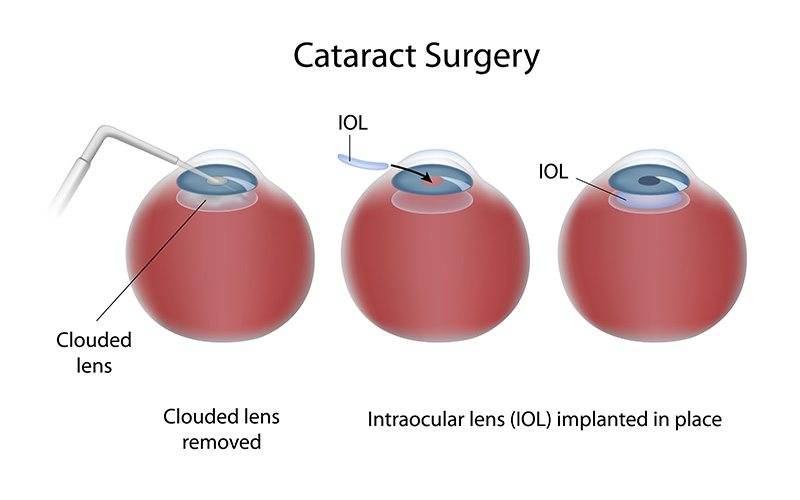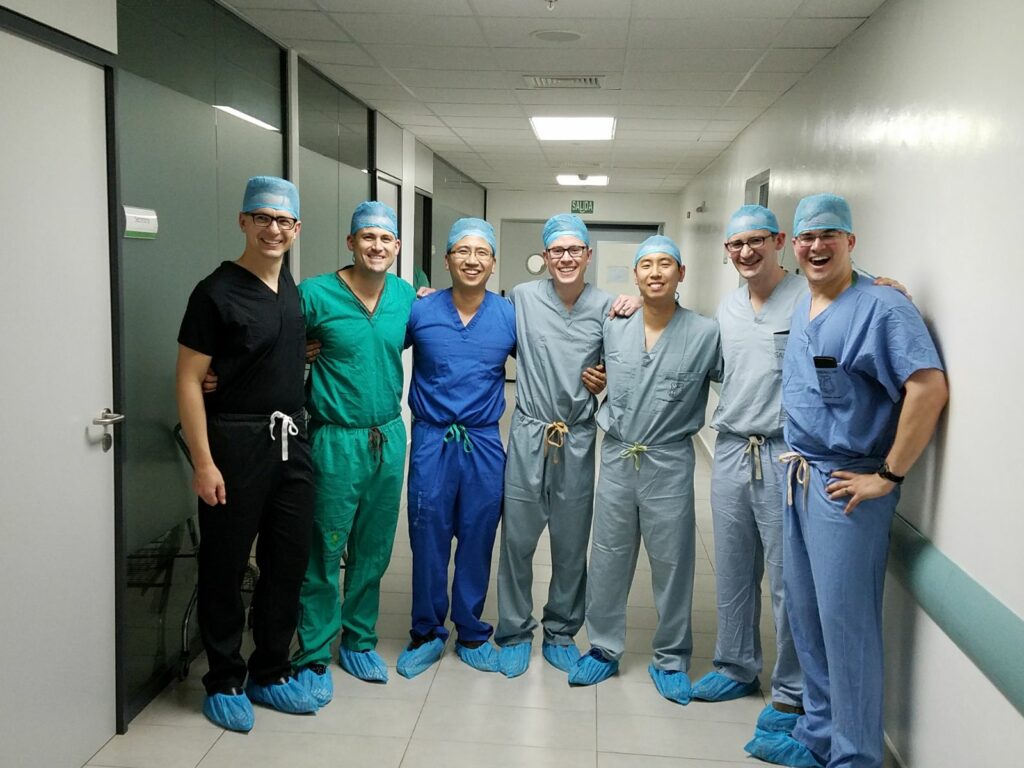
In the realm of vision correction surgeries, two procedures stand out as transformative solutions: cataract surgery and LASIK. Both aim to enhance visual acuity and improve quality of life, yet they address different underlying issues and cater to distinct patient demographics. Let’s delve into the intricacies of each procedure, exploring their benefits, recovery, and considerations for potential candidates.
Cataract Surgery: Restoring Clarity
Cataracts are a common age-related condition where the eye’s natural lens becomes cloudy, impairing vision. Cataract is the most common cause of blindness worldwide, and cataract surgery is the most effective treatment, offering a remarkable restoration of vision for millions worldwide each year.
Procedure Overview: Cataract surgery involves removing the cloudy lens and replacing it with a clear artificial lens called an intraocular lens (IOL). The procedure is typically performed under local anesthesia and often takes less than 15 minutes per eye. Surgeons make a small incision in the eye, use ultrasound to break up the cloudy lens, and insert the IOL, which requires no stitches to close the incision.

Benefits:
- Improved Vision: Patients experience significant improvements in vision clarity and color perception.
- Minimal Discomfort: Local anesthesia ensures patients are comfortable during the procedure.
- Fast Recovery: Most patients resume normal activities a day or two after surgery.
Considerations:
- Age: Cataracts predominantly affect older adults, typically those over 60.
- Health Conditions: Patients should be in good overall health for surgery.
- Visual Goals: The primary goal of cataract surgery is to correct cloudy vision. However, your surgeon can also tailor the IOL to meet your visual needs, whether distance vision, reading vision, or both.
LASIK: Reshaping Vision
LASIK (Laser-Assisted In Situ Keratomileusis) has revolutionized the field of refractive surgery by providing a precise method to correct common refractive errors such as myopia (nearsightedness), hyperopia (farsightedness), and astigmatism. LASIK is a form of laser vision correction (LVC) alongside PRK and SMILE. We’ll discuss LASIK alone for this blog, but much of this discussion also applies to PRK and SMILE. Check out the individual LASIK, SMILE, and PRK pages to learn more about each procedure.
Procedure Overview: LASIK surgery involves reshaping the cornea, the transparent front part of the eye, using an excimer laser. Before the procedure, the surgeon creates a thin flap in the cornea using a femtosecond laser or a mechanical microkeratome. At Corsini Laser Eye Center, we always use a femtosecond laser – “bladeless LASIK” – because it is generally considered the safest approach. The excimer laser then reshapes the underlying corneal tissue to correct the refractive error. The flap is then placed back into position, where it adheres naturally without the need for stitches.

Benefits:
- High Precision: LASIK offers precise correction tailored to each patient’s unique vision needs. Where IOLs come in half-diopter increments, LASIK can correct up to the one-hundredth of a diopter of refractive error, making it far more precise than even contacts and glasses.
- Rapid Results: Many patients notice improved vision almost immediately after surgery.
- Minimal Discomfort: The procedure is typically painless, with mild discomfort lasting a short time post-surgery.
Considerations:
- Stable Prescription: Patients’ vision should be stable for at least a year before considering LASIK.
- Age: LASIK is generally suitable for adults over 18 with stable vision and healthy eyes.
- Eye Health: Candidates should have healthy corneas and no significant eye diseases.
Comparative Analysis:
1. Purpose:
- Cataract Surgery: Restores vision obscured by clouded natural lenses. Refractive error can then be corrected with a custom IOL.
- LASIK: Corrects refractive errors up to the one-hundredth of a diopter to reduce or eliminate dependence on glasses or contact lenses.
2. Patient Demographics:
- Cataract Surgery: Primarily older adults with cataracts affecting daily activities. The average age for cataract surgery in the United States is about seventy, but there is wide variability in how quickly cataracts develop for each patient.
- LASIK: Young to middle-aged adults seeking freedom from glasses or contacts. The FDA approves surgery for those at least eighteen years old. LASIK remains an excellent option for patients until their cataracts become visually significant, often in the seventh or eighth decade of life.
3. Recovery:
- Cataract Surgery: Quick recovery with minimal downtime.
- LASIK: Rapid improvement in vision with a short recovery period.
4. Long-term Results:
- Cataract Surgery: Permanent improvement in vision clarity. Patients may still require glasses for clear vision at distance or near.
- LASIK: Long-lasting correction of refractive errors. Adjustments may be needed over time, but this is less likely with modern lasers and highly skilled surgeons.
My doctor told me I have cataracts. Does that mean I can’t get LASIK?
This is a common question I get asked, and the short answer is NO! Everybody will develop cataracts at some point in their life. Cataracts often develop slowly, with gradual changes occurring over decades. Many patients safely undergo LASIK during the early stages of their cataract development and are thrilled with their results. However, cataract surgery is the better option if you have visually significant cataracts – causing noticeable glare or preventing you from seeing 20/20 despite an updated glasses prescription. If you’re unsure whether you are a candidate for cataract surgery or LASIK, schedule a comprehensive evaluation with your ophthalmologist to learn more.
The most common causes of blindness worldwide
Cataract and refractive error – treated by cataract surgery and LASIK, respectively – are the two leading causes of blindness worldwide. Each pathology causes approximately 90 million cases of blindness. Of the 2.2 billion people with near or distance vision impairment, the World Health Organization1 estimates that at least 1 billion instances could have been prevented or are yet to be addressed. The WHO also provides us with the following statistics:
- Globally, only 36% of people with a distance vision impairment due to refractive error and only 17% of people with vision impairment due to cataract have received access to an appropriate intervention.
- Vision impairment poses an enormous global financial burden, with the annual global cost of productivity estimated to be US$ 411 billion. This figure far outweighs the estimated cost gap of addressing the unmet need of vision impairment, estimated at about US$ 25 billion.
- Vision loss can affect people of all ages; however, most people with vision impairment and blindness are over the age of 50 years.

The “Eye Bros” (Dr. Corsini’s residency class) at the Dr. Luis Fábrega Hospital Regional de Veraguas in Panama, 2018. *Four out of the five glasses-wearing Eye Bros have since undergone laser vision correction.
Cataract surgery and LASIK are sight-saving procedures that offer permanent solutions to billions worldwide suffering from cataracts and refractive error. When I was in the Air Force, we traveled to Panama on a medical mission trip to provide cataract surgery to those who could not otherwise access or afford vision-saving care. Alongside educational and advocacy imperatives, volunteerism is part of the WHO’s agenda to combat the personal and economic impact of blindness worldwide. Visit https://www.who.int/news-room/fact-sheets/detail/blindness-and-visual-impairment to learn more.
Conclusion
Both cataract surgery and LASIK represent significant advancements in vision correction, catering to different needs and conditions. Cataract surgery restores clarity affected by aging lenses, while LASIK reshapes the cornea to correct refractive errors. The choice between these procedures depends on individual circumstances, such as age, eye health, and visual goals. Consulting with an ophthalmologist is crucial to determine the most suitable option for achieving optimal vision and enhancing overall quality of life.
Whether it’s the restoration of clouded vision or the quest for freedom from glasses, modern eye surgery empowers individuals to see the world with newfound clarity and confidence. Understanding these procedures allows patients to make informed decisions about their eye health, ensuring they receive the best possible care for their vision needs.
Thanks for reading!


